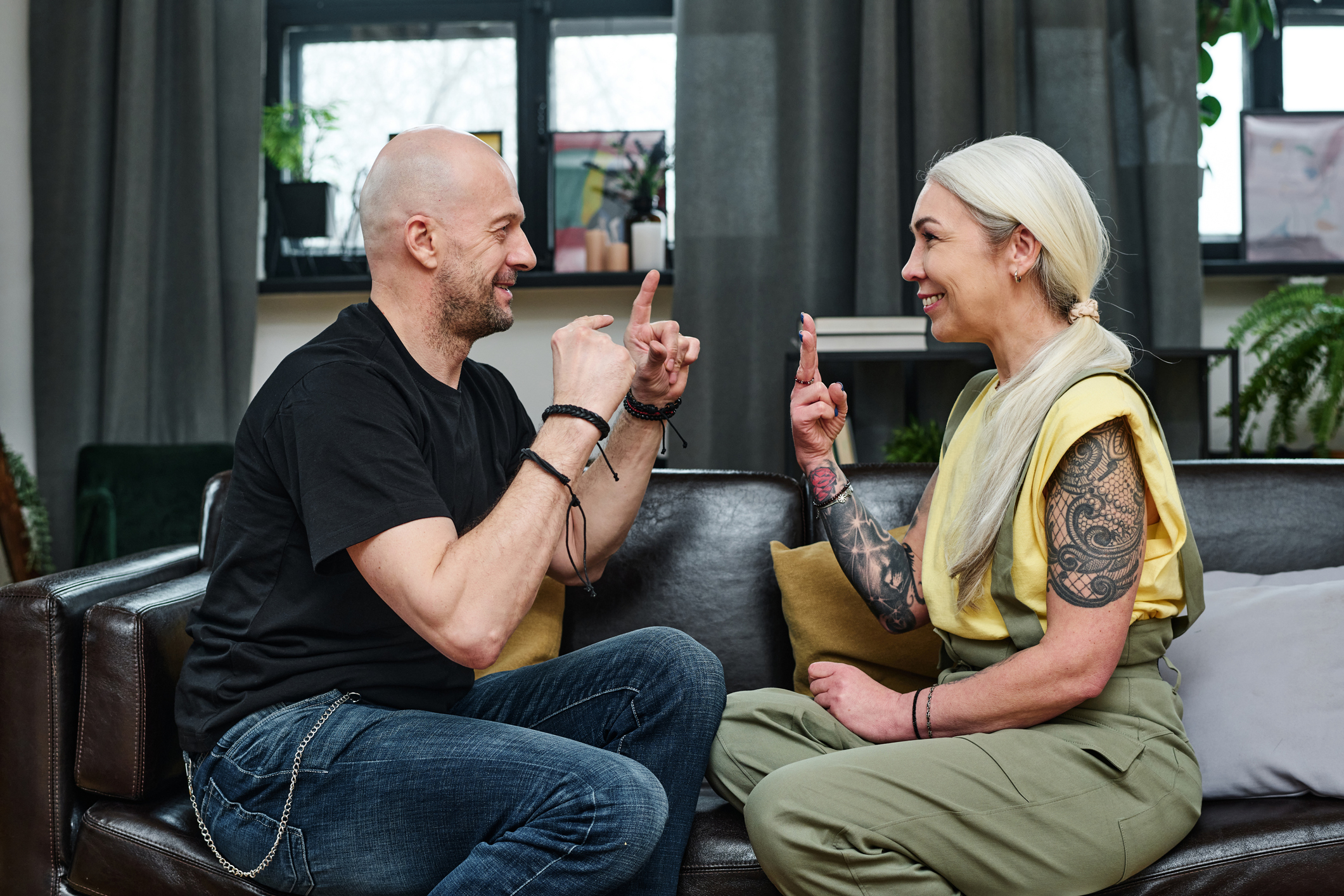Auslan (Australian Sign Language) is the language of the Deaf and hard of hearing community.
Deaf and hard of hearing community.
In the 2021 Census, 16,242 Australians indicated that they use Auslan at home. Deaf Australia estimates that the number of people who use Auslan to communicate every day is closer to 20,000.
That’s a considerable demographic that often gets left behind when organisations are considering accessible communications.
Auslan and English are not interchangeable
A common myth is that all Deaf or hard of hearing people speak English (or their native language) as their first language.
This is incorrect. Many people use Auslan as their first, or preferred, language. In some cases, English is not even a person’s second or third language.
This means that when considering accessibility for people who are Deaf or hard of hearing, Auslan should be used as the priority communication tool. This is relevant for both in-person, such as meetings or events, and digital, such as video content. In this article we’ll focus on digital content.
What does this mean in a practical sense?
You may have noticed an increase in video content on social media that includes automatically generated captions. While this
is a great start, and we’ll explain why later, it forgets that not all Deaf people use English as their first language.
In our experience, some people who are Deaf or hard of hearing prefer video content that has both an Auslan interpreter
and captions.
Easy Read HTML – Easy Read used on a website – is well suited to people who use Auslan as a first language. The simplified grammar and use of images help the audience to understand the content. Ideally, there would also be a video of an Auslan interpreter signing the Easy Read text.
When you start building accessibility into your next communications plan, consider the use of Auslan, captions and Easy Read.
Is a caption just a caption?
Captions were designed specifically for the Deaf and hard of hearing and contain a mix of spoken word and audio descriptive text. For example, a description of background sounds (like a door slamming), music or a change in people speaking.
The terms ‘subtitles’ and ‘captions’ are often interchanged and have different meanings depending on which country you’re in. In general, the words you see on video content are called captions.
Traditionally, subtitles referred to foreign language translations. They assume the person watching can hear the audio and are a word-for-word script of the spoken word happening in a video.
Everyone benefits
Many people watch videos on their mobile devices with no audio. Captions can improve the accessibility and reach of videos by allowing more people to engage with your content:
- when you’re in a noisy environment and can’t hear the audio.
- when you’re in a place where you need to be quiet. For example, a library.
- when you have your mobile on silent in a public place, but still want to watch that video on Instagram.
It’s important to remember though that captions don’t necessarily make your content more accessible to people who don’t use English as a first language.
Overwhelmed with this area of accessibility? Start small.
One frustration for the Deaf and hard of hearing community is not being able to quickly and easily communicate with a business or service.
Some small things you can implement straight away:
- Include a clear email contact in your communication materials.
- Provide the details for the National Relay Service.
- Consider having a mobile number available with the option for people to contact you via text message.


